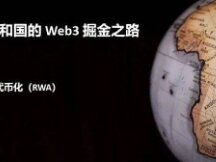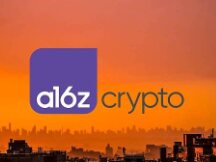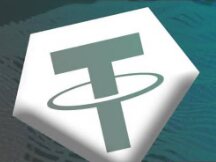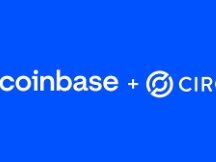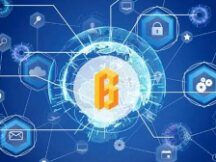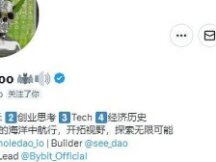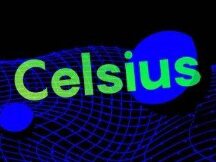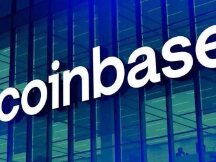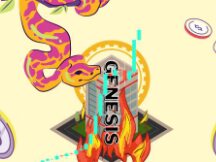Explore the modularity of the blockchain: a combination

In this sentence, you need to understand two main points: (1) stacking and (2) sharding. In this article, we're going to focus on the competition, what stackups, how they work, and where they'll go in the future.
Blockchain Trilemma and Layer 2 Birthdays
In fact, blockchains encounter a trilemma called the blockchain trilemma. This means the balance of decentralization, scalability, and security that all blockchains face, one blockchain only optimizing for two, and the third requires sacrifices. Obviously, security is the key to blockchains, which often lead to disruption in distribution or activation.

Why is decentralization important?
You might be wondering why decentralization is so important. This is a common misconception, and it is often argued that web3 promotes decentralization against government censorship. In fact, this is not the main reason why decentralization is so important. The answer is often in the encouragement to innovate.
The main problem with these platforms is the estimation of the lifespan. At the beginning, the platform was very attractive because it had to attract users, developers, companies and advertising agencies, which would make the platform more profitable. It minimizes the impact on access, creates low costs and creates a favorable environment for participants. As Chris Dixon says, the role of the principle is to "make it more efficient because the platform (by definition) is a system with multiple network problems". When users and developers have different rights.

Centralized platform lifecycle
When the middle platform reaches the top of its s-touch circle, the status of its relationship with platform participants changes from positive to zero-sum. In general, this means that the grassroots platforms have decided to remove user data, earn money and attract more businesses created by the platform. This is bad news for new developments and continuous improvements to these platforms.
Over the years, we've seen this life-changing experience across multiple platforms including Facebook, Twitter, Microsoft, YouTube, and Google. It is the main platform of the Internet today. Ultimately, this makes entrepreneurs, manufacturers, and investors wary of these goals, and many reject grassroots contact. And, most importantly, from the user's point of view, there are integration issues, which makes it a risk of security breaches and information self-regulation.
On the other hand, there is no risk of censorship of decentralized platforms. Entrepreneurs and manufacturers have the freedom to create with a pure heart. This is similar to the early Internet era (1980s through the early 21st century), when Internet services were generally based on open processes and available through the Internet community movement. By definition, decentralized platforms cannot infer value from users and developers, but users and developers can create value. To clarify this, Google's motto is "Do Not Do Bad", and on distribution platforms, this concept has become "Do Not Do Bad".
It all sounds good, but I think there are some big reasons for a decentralized platform, but will it win or happen? The second period was controlled by the use of media such as Google, Youtube and Twitter. I think the 3rd Internet age is relevant.
For the above reasons, entrepreneurs and developers have been phased out of mid-platform development and are now moving towards distributed platforms such as Ethereum. You might think that the middle platform only pays the developers, but in my opinion, the main platform can't be better than the distribution-based platform, and the cost of innovation is never comparable to the cost of innovation of a totally free entrepreneur. This is especially true given the tokenization nature of our decentralized internet age. These days, investors can raise money at an incredible price, minimize the impact of core platforms, and only pay developers.
Blockchain technology is the birthplace of the ultimate web3 platform. A situation that does not require the intervention of third parties and has eliminated many inefficiencies. Helping businesses, developers, and investors to create these blockchain platforms requires distribution.
From an innovation, user privacy, and data ownership perspective, blockchain decentralization makes sense. Unfortunately, that means activating the capabilities within the blockchain trilemma.
Building a blockchain
This way, blockchains work in the past, so that when an advertiser trades, the miner checks it and then sends it to the blockchain, but all other miners in the network have to confirm that it looks like this. A decentralized network can accommodate a large number of miners, which means poor operation and time-consuming.
However, decentralization, security, and scalability are the only blockchain products that are determined by the products developed by the blockchain. As a key point, it is important to give a brief description of the product: (1) the approval, (2) the information available and (3) the achievement. These agreements ensure the security and reliability of blockchain data storage by facilitating the integration of transactions between network nodes. The available data means that the payment process ensures that it can be applied to the exchange data (e.g. exchange, state, etc.) of the blockchain. Completion refers to counting which requires updating the blockchain with new data.
Simply put, consensus is where blockchain data transfers are approved and stored. Existing data is where the blockchain can add additional data at a specific time. Completion is an update that is recognized and recorded on the blockchain before being written to the permanent file.
As a solution for the blockchain trilemma, an L2 extension solution was developed. The L2 protocol can be seen as a major solution to the Ethereum payment process, allowing the payment layer to improve delivery and security.
To date, Layer 2 solutions are valued at around $ 6.62 billion, with solutions such as Arbitrum and dYdX (led by StarkEx) accounting for the bulk of the market.

There are a variety of measurement solutions for state channels, plasmas, side chains, and accumulations.
Yob-up hom
Rollup is a solution that provides changes to the grouping, compression, and approval layer for validation. Ethereum can perform 15 to 3,000 transitions per second (TPS) without compromising security while improving performance by scanning multiple operations at once.
By default, users do not send changes to L1 miners, but instead send the changes to the server update rollup to make sure those changes are valid. So they trade outside the Ethereum keychain, but the totals publish data on the Ethereum keychain. When the switch is printed on the key fob, it gains the security of L1.
There are two types of rollups, (1) optimistic rollups and (2) zk-Rollup, with different safety standards.
cumulative optimists
The best leads link up hundreds of businesses and only announce the least amount of information needed on the channel without proof. He is known as an "optimist" because he begins to think that there is no deception or bad behavior. The best hope is only proven if there is something wrong with the change or condition.
The benefits of optimism include EVM and strong relationships in addition to improved visibility. In other words, anything you can do on Ethereum L1 can come at the cost of quality.
However, due to fraud issues, the waiting time for the chain to operate can be very high. You may have to wait up to a week to get your valuables back on track as you will need to take the time to identify and resolve the scam. It is a problem because it does not involve any deception or harassment.
Another downside to the best perspective is that all credentials, such as signatures and Oracle feeds, must be printed on strings. This limits scalability.
The main contracts include Arbitrum and Optimism.
ZK-Rov
zk-Rollup differs from the best rollup in that it uses zk technology to compile personal files. Zk refers to the ability to prove something (business or state) to a participant without disclosing the necessary information.
Instead of sending the changes to the L1 miner, the user sends the changes to the patch from the server that completes the exchange. The two most commonly used certifications for ZK-Rollup are ZK-SNARKS and ZK-STARKS, which developed ZK-SNARKS as a proven industry standard and introduced them to the first major steps in the chain. Evidence like this is easy to create, reliable, and very quick to identify. Contextually, hundreds of professions can be assembled into a single certificate, and the validation of this certification can take up to 5 milliseconds.
Leveraging the zero-knowledge capabilities of this technology, Level 1 miners will never know what data is in a transaction. Only Rollup miners know about the data exchange. This is very interesting because it means that the data can be personalized even in public blockchains.
With ZK-Rollup, there will be no delay in the removal of assets, as the ZK-SNARK certification has been approved by the ZK Rollup contract identifying the assets. This is one of the most important differences between the best rollup and ZK-Rollup.
The advantages of ZK-Rollup are as follows: As mentioned before, it takes longer to complete the race and has less impact on business difficulties than optimism. . However, ZK-SNARK is considered expensive, so it may not be suitable for applications with small chain operations.
It should be noted here that most ZK-Rollups do not use the privacy of their current ZK device. Instead, it focuses on scalability. In other words, the proof can be smaller and simpler than the local count.
Technological comparison of bullish rollup and ZK rollup

Although the best outlook is now better than ZK-rollup, simply because of its simplicity, ZK-rollup is clearly capable of delivering better results to users. .
The future of rollup
While these two contexts now provide the benefits of the full chain process in Ethereum, there are still some constraints that need to be improved.
concurrence
EVM stands for Ethereum Virtual Machine and can be thought of as a mainframe that includes many types of blockchain functionality. Importantly, it is the foundation of the entire Ethereum operating system, responsible for the execution and delivery of smart contracts.
EVM compatibility means that other chains, such as link chains, can provide Ethereum smart contracts on this chain. Therefore, running an Ethereum smart link between other chains is impossible without EVM compatibility. EVM compatibility is obviously very good. Indeed, projects submitted to Ethereum, such as DeFi giant like Uniswap, can be sent to the same channel. This means that if the chain is the main competitor of the Ethereum executable modules, it will be very easy to lead users through the finished model. Considering the number of developers in the Ethereum community, this is also a big addition to the similar chain. By entering the community with EVM relationships, the relationship chain will benefit from the above mentioned capabilities and network implications, with for new developments to be developed in the future.
The downside to EVM compatibility is its complexity and the associated security vulnerabilities. So while the development of EVM compatibility is generally slow for rollups, there are some innovations, especially in terms of optimistic rollups.
Another challenge for Rollup, and indeed one of the happiest things we can see in the future, is the direct benefits of the rules. Fiat currencies referring to ordinary currency include the US dollar, British pound, and Japanese yen. On-ramp refers to a program that allows you to directly exchange fiat currency for cryptocurrency. Fiat currency ramp services are now mainly available on exchange mediums such as Coinbase and Binance.
The challenge of rollup is greater. In order to interact with cryptocurrencies at Rollup, you will have the power to put your crypto assets into any wallet of your choice, so you will need to connect your crypto assets to Rollup itself. It is very impractical to use and requires a lot of patience.
Accumulation directly from your existing bank account will increase your usage. This is why I am so proud of their development: improving the user experience will allow users not to directly interact with Layer 1 and lead to a major migration of Layer 1 applications to Layer 1 applications. layer 2.. for visibility and safety. This will be the real start of the adoption of modular blockchain.
It should also be noted that to achieve the lowest interest rate, we need to create the largest market in the level 1 chain. This is done to evenly distribute the value of the multiple stocks. Thus, the bearing costs can be seen as the first level commodity and the demand commodity. As a result, more demand is needed for Rollup to achieve its cost cutting capabilities compared to Ethereum. This is often referred to as scale trading, which means that the value of the marginal market falls on the next marginal market.
In fact, it's revolutionary because it disrupts the traditional price structure of blockchains, which is often more expensive than a margin swap. This is also an example of ZK rollup that is best suited for optimism, as the best prospect should always include a signature with every trade, which results in another value. On the other hand, ZK-Rollup does not need to be signed and offers better data compression, which makes it more efficient.
Next winding catalyst
TIAB SA - 4488
An important point to mention in this article is EIP-4488, which represents Ethereum's development proposals for those unfamiliar with EIP, which is a standard for reporting new activities or processes in Ethereum. Anyone in the Ethereum community can create an EIP, but they need full authorization to use it.
Overall, the EIP-4488 reduces the security risk by reducing the data call rate from 16 gas / byte to 3 gas / byte and setting a high limit on the data call in each block. Mostly, it means lower management costs, lower costs for end users.
application
Sharding is another important catalyst for rollup. Sharing is an important concept to understand in terms of modular blockchains and is the key to solving problems that restrict Ethereum data.
concludes
Rollup will undoubtedly play an important role in the future of blockchain, and it will be the network through which dApp users interact with blockchain technology today. These users won't even know which cloud hosting service their website is using, just as they usually don't know which cloud hosting service their website is using. This is why I am so happy for Rollup. We are still in the early stages of our life, so the technology is difficult and sometimes the functionality does not disappear.

Scan QR code with WeChat
